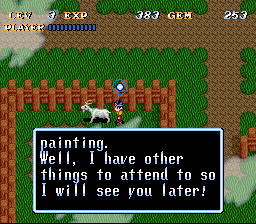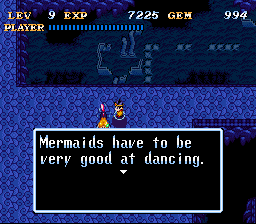Culture
Retro Retrospect: Soul Blazer
If you couldn’t tell by my previous article,[1] I have a soft-spot for retro video games. This article marks the start of a column named “Retro Retrospect” that explores the merit of older games. Originally, I wanted to do a reoccurring column about JFK conspiracy theories but Heave told me that I should stick to video games. Reluctantly, I agreed. Unfortunately, this means no one gets to hear how Pope Pius XI, despite being dead for almost 24 years (!), was the shooter on the grassy knoll.
Let’s clear up something up first: Soul Blazer is an action-RPG published by Enix is 1992. Despite its appearances (specifically, a top down perspective and a guy with a sword), the game is far from a Legend of Zelda clone. Unlike Zelda, there is way less of an emphasis on puzzle solving. Instead, players kill monsters and free townspeople who allow for opportunities to free more people, and so on.[2]
Considering how clichéd RPG plots can be, the premise for Soul Blazer holds up: you are an avatar sent by God (referred to in-game as “The Master”) to free trapped souls. What’s interesting is that freeing souls doesn’t mean you run around rescuing people souls; the game uses the term the same way that spiritual-but-not-religious girl you don’t like uses the term. The player releases pretty much anything: plants, dogs, mushrooms, alligators, angelfish, whatever.
Since the main character is a divine being, he can converse with anything (that makes sense, right?). This means when you can’t go any further in a dungeon, you may have to help out a goat. And sometimes, those goats have agendas.
The game’s combat is straightforward but the pace of the game helps offset the repetitiveness. You kill enemies by sword swingin’ or using magic collected through the course of the game. Enemies give you EXP and gems (used to cast spells); nothing groundbreaking there. Each sword and armor you collect has unique abilities that keeps old equipment from being completely replaced but most of the time, barring specific dungeon concerns, you’ll just wear what’s the strongest.
Despite being a game where you spend a good chunk of time trying to locate and save a Mermaid Queen, Soul Blazer has a funk-heavy soundtrack. The music for the towns and the navigation menus sound like typical 16-bit RPG fare, but the minute you enter a dungeon the slap bass and synth comes out.
Soul Blazer is a sum of its parts game: no single aspect of the game stands out in particular (even by 1992 standards) but as a whole the game just clicks. If nothing else, it’s worth checking out what kind of games Enix was publishing before they merged into Square Enix. Soul Blazer’s sequels, Illusion of Gaia, and Terranigma also deal with the idea of God intervening on Earth. When you consider the amount of RPGs that fall into the “unlikely hero saves the world” category, Soul Blazer stands out.
—
[1] Fun fact: My high school English teacher called it “surprisingly not gay.” Coincidentally, that phrase also appeared under my yearbook photo instead of my name.
[2] Soul Blazer is also not a kind of hydroponic marijuana instilled with a demonic spirit. If this is a subject you’re interested in, the closest thing I can suggest is Evil Bong and its sequel, Evil Bong 2: King Bong. Granted, in both movies, as the name implies, the bong is evil. Not the weed itself. Then again, if you’re into art that combines weed and malevolent spirits, you’re probably not one to sweat semantics.

